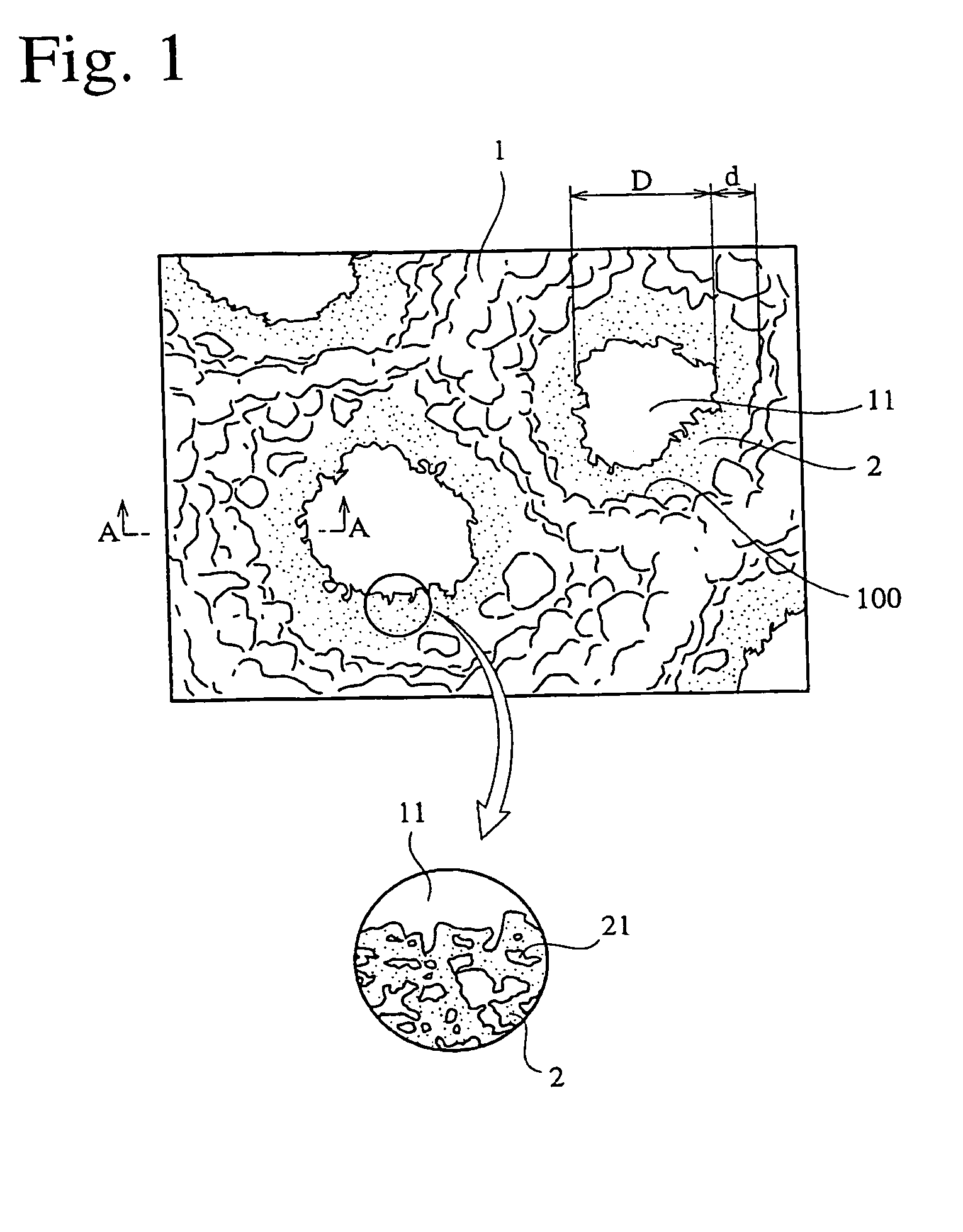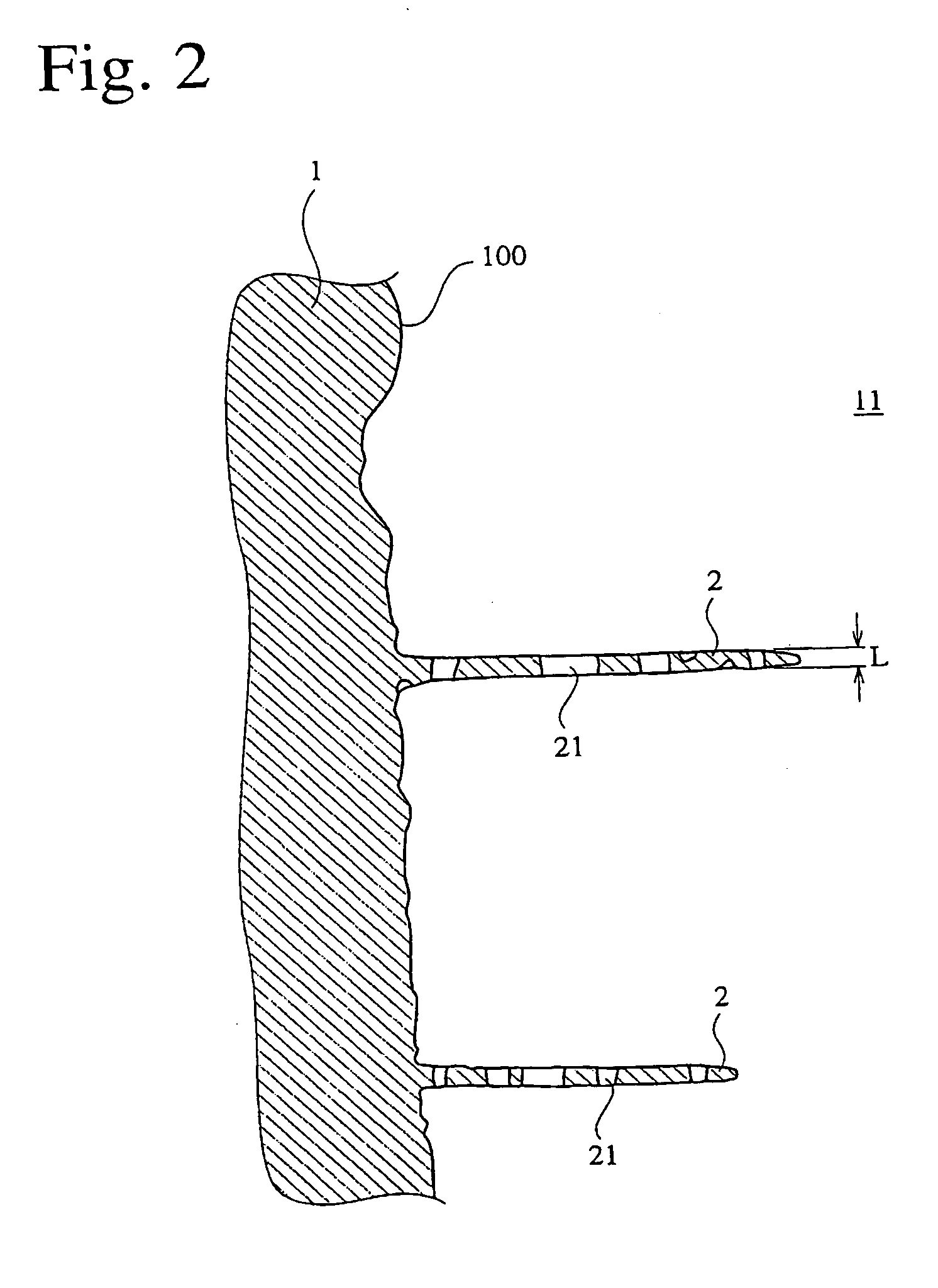Porous calcium phosphate ceramic and method for producing same
a technology ceramics, which is applied in the field of porous calcium phosphate ceramics, can solve the problems of low mechanical strength and cannot be used as bone-filling materials for portions that need high mechanical strength, and achieve the effect of large mechanical strength and excellent new bone-forming ability
- Summary
- Abstract
- Description
- Claims
- Application Information
AI Technical Summary
Benefits of technology
Problems solved by technology
Method used
Image
Examples
example 1
[0053] 100 parts by mass of hydroxyapatite powder having an average diameter of 15 μm and 263 parts by mass of water were mixed and stirred in a homogenizer PA92 available from SMT Co., Ltd, such that the hydroxyapatite powder was partially pulverized to fine hydroxyapatite particles having an average diameter of 0.5 μm, thereby forming a dispersion containing the coarse hydroxyapatite particles and the fine hydroxyapatite particles. The mass ratio of the coarse particles to the fine particles in the dispersion was about 1000 to 1. A 3%-by-mass malamide surfactant solution available from Lion Corporation and 67 parts by mass of a 10%-by-mass methylcellulose solution were then added to obtain a slurry containing 1% by mass of the malamide surfactant. The slurry was foamed by vigorous stirring by the homogenizer for 5 minutes under a stirring power of 60 W / L (output during stirring), while keeping the temperature of the slurry at 8° C.
[0054] The resultant slurry containing air babble...
example 2
[0057] A porous hydroxyapatite ceramic was produced in the same manner as in Example 1, except that 67 parts by mass of a 10%-by-mass methylcellulose solution and 3 parts by mass of polyoxyethylene lauryl ether surfactant (TEALS, available from Nihon Surfactant Kogyo K.K.) were added to a dispersion containing the coarse hydroxyapatite particles and the fine hydroxyapatite particles. The porous sintered hydroxyapatite ceramic had a porosity of 88%. FIGS. 5 and 6 are scanning electron photomicrographs of the porous hydroxyapatite ceramic. As is clear from FIGS. 5 and 6, the porous hydroxyapatite ceramic had a uniform pore size distribution mostly in a range of 50 to 500 μm. The ring-shaped portions were as thick as about 1 μm or less, and the fine pores had an average diameter of about 800 nm.
example 3
[0058] A porous hydroxyapatite ceramic was produced in the same manner as in Example 1, except that 100 parts by mass of coarse hydroxyapatite particles having an average diameter of 15 μm, 0.1 parts by mass of fine hydroxyapatite particles having an average diameter of 100 nm and 263 parts by mass of water were mixed to obtain a dispersion, and that 67 parts by mass of a 10%-by-mass methylcellulose solution and 3 parts by mass of a polyoxyethylene lauryl ether surfactant (TEALS, available from Nihon Surfactant Kogyo K.K.) were added to the dispersion. The porous sintered hydroxyapatite ceramic had a porosity of 88%. FIG. 7 is a scanning electron photomicrograph of the porous hydroxyapatite ceramic. As is clear from FIG. 7, the porous hydroxyapatite ceramic had a uniform pore size distribution mostly in a range of 50 to 500 μm. The ring-shaped portions were as thick as about 1 μm or less, and the fine pores had an average diameter of about 800 nm.
PUM
| Property | Measurement | Unit |
|---|---|---|
| Percent by mass | aaaaa | aaaaa |
| Percent by mass | aaaaa | aaaaa |
| Thickness | aaaaa | aaaaa |
Abstract
Description
Claims
Application Information
 Login to View More
Login to View More - R&D
- Intellectual Property
- Life Sciences
- Materials
- Tech Scout
- Unparalleled Data Quality
- Higher Quality Content
- 60% Fewer Hallucinations
Browse by: Latest US Patents, China's latest patents, Technical Efficacy Thesaurus, Application Domain, Technology Topic, Popular Technical Reports.
© 2025 PatSnap. All rights reserved.Legal|Privacy policy|Modern Slavery Act Transparency Statement|Sitemap|About US| Contact US: help@patsnap.com



